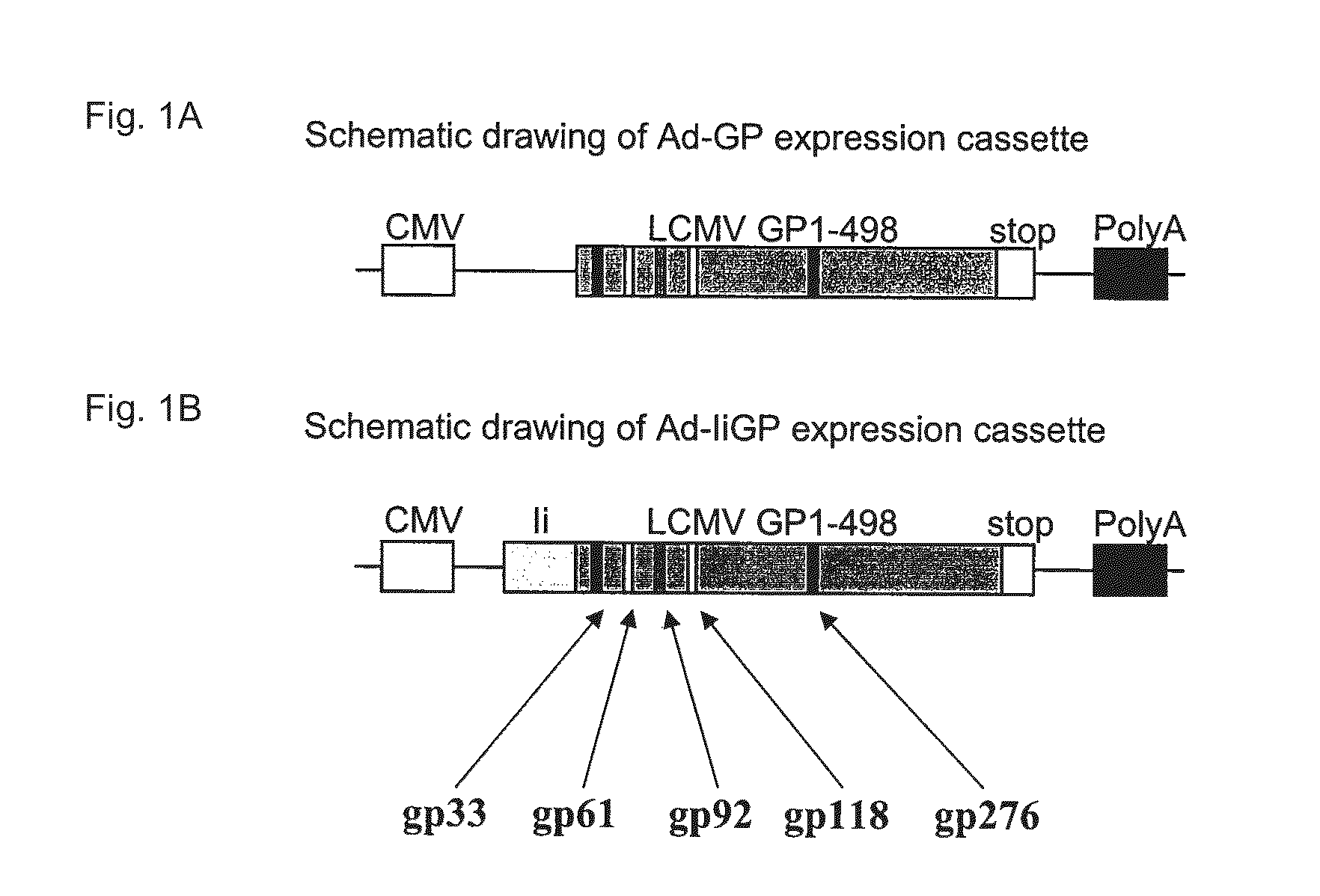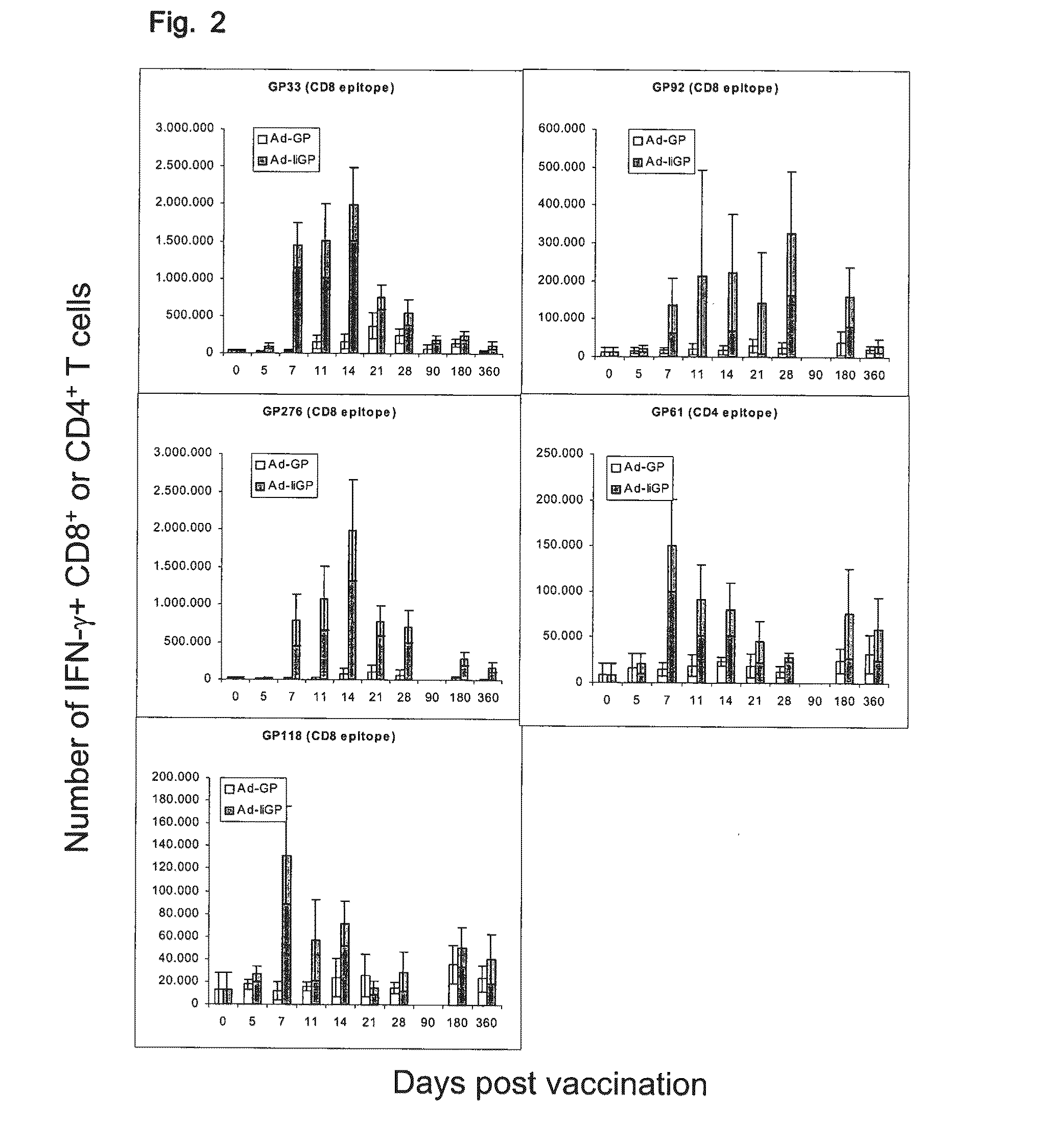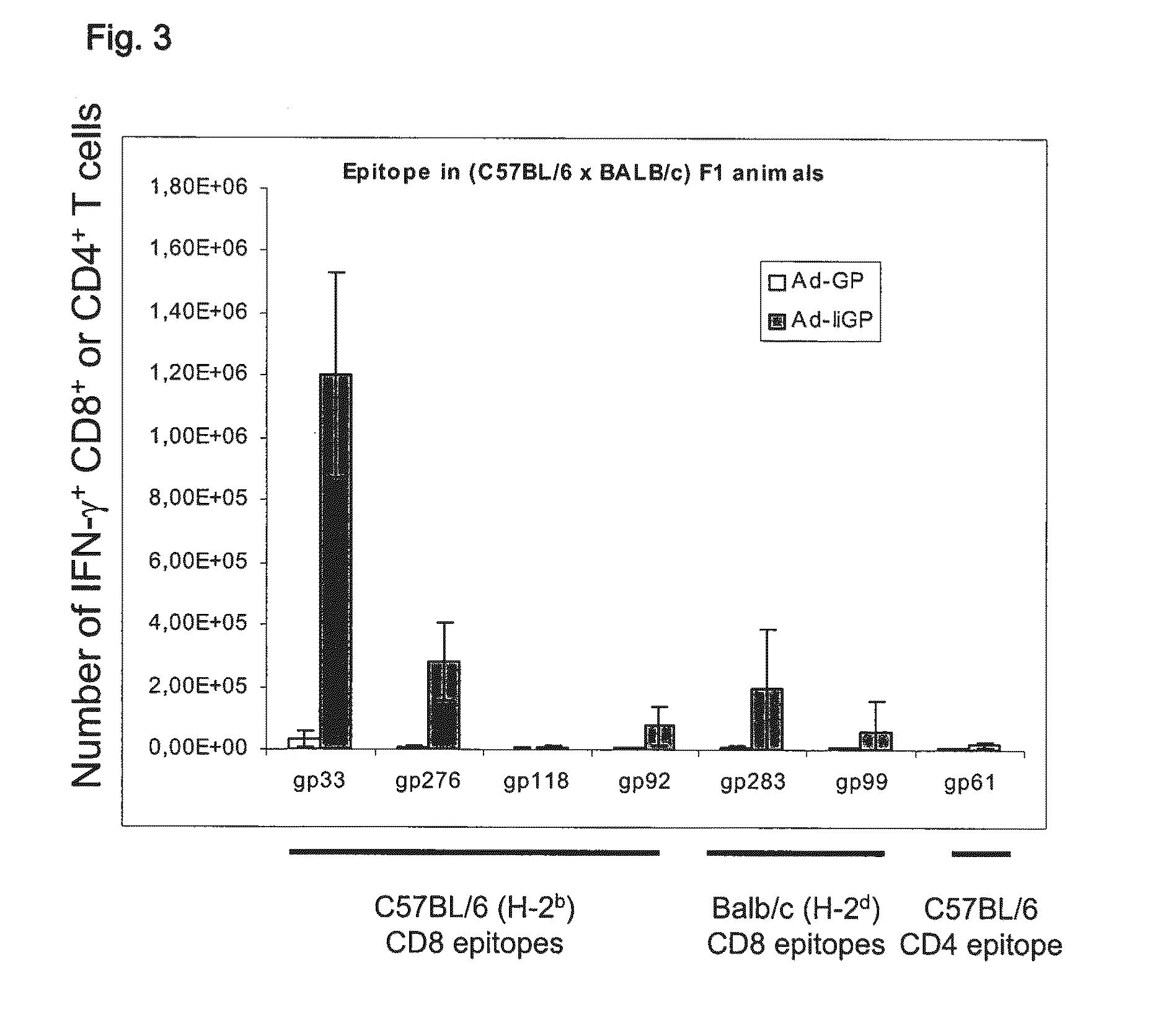Nucleotide vaccine
a technology of nucleotide vaccine and vaccine, applied in the field of nucleotide vaccine, can solve the problems of vaccines running the risk of introducing diseases, no suitable vaccines are available against numerous pathogens, and threaten to overwhelm our healthcare systems, so as to improve the vaccination of all animals, broaden and improve the response , the effect of increasing the kinetics of the respons
- Summary
- Abstract
- Description
- Claims
- Application Information
AI Technical Summary
Benefits of technology
Problems solved by technology
Method used
Image
Examples
example 1
CD8+ and CD4+ T-Cell Responses to Adenovirus Encoded Epitopes
[0211]Mice: C57BL / 6 (H-2b), C57BL / 6×BALB / c (H-2bxd) F1 hybrids and MHC II− / − mice (B6.129-H2-Ab1tm1GlmN12 (H-2b)) were obtained from Taconic M&B (Ry, Denmark). All mice used were between 7-10 weeks old and housed in a specific germ free facility. All experimental procedures were performed according to local experimental guidelines.
Adenovirus Vectors:
[0212]For construction of E1 and E3 deleted adenovirus-expressing, LCMV derived antigen fused to invariant chain we performed 2-step PCR. First we obtained overlapping PCR products containing the full-length mouse invariant chain and full-length LCMV glycoprotein and these were joined by secondary PCR with invariant chain 5′ and glycoprotein 3′ primers. Adenovirus expressing full-length GP was amplified in single step PCR. The obtained fragments were cloned into the pacCMV shuttle vector. The obtained plasmid was co-transfected with pJM17 plasmid into HEK293 cells and viral lys...
example 2
[0221]CD8+ and CD4+ T-cell responses to adenovirus encoded epitopes in F1 hybrid mice: As C57BL / 6 mice are homozygous with regard to both MHC class I and MHC class II molecules on all loci, we tested whether Ad-GP and Ad-IiGP could also induce an immune response in C57BL / 6×BALB / c F1 mice that express both the H-2b and H2d haplotypes. These mice resemble an out bred population, but with defined haplotypes. The experiments were performed as above, but testing was limited to day 21 after vaccination. As can be seen from FIG. 3, Ad-IiGP efficiently induces CD8+ T-cell responses towards a multitude of epitopes while Ad-GP seemed to perform worse than in homozygous C57BL / 6 mice.
example 3
[0222]Ad-IiGP exerts CD8+ T-cell stimulatory effects that are independent of CD4+ T-cells: As a potential mechanism of Ii function in the enhanced stimulation of CD8+ T-cells is the ability to traffic to endosomal and lysosomal compartments and stimulate CD4+ T-cells (Diebold et al., 2001, Gene Ther. 8:487-493) through MHC class II, we performed vaccination of MHC class II deficient mice. To this effect MHC-II− / − or C57BL / 6 mice were vaccinated with 2×107 IFU of Ad-GP or Ad-IiGP in the right hind footpad. On day 21 or 90 post vaccination the number of epitope specific CD8+ or CD4+ T cells were determined by intracellular staining for peptide-induced IFN-γ of spleen cells. As can be seen from FIG. 4, Ad-IiGP efficiently induces CD8+ T-cell responses directed against several epitopes; in the absence of CD4+ T cell help however, some responses were lower than what is seen in wild type mice.
PUM
| Property | Measurement | Unit |
|---|---|---|
| length | aaaaa | aaaaa |
| volume | aaaaa | aaaaa |
| volume | aaaaa | aaaaa |
Abstract
Description
Claims
Application Information
 Login to View More
Login to View More - R&D
- Intellectual Property
- Life Sciences
- Materials
- Tech Scout
- Unparalleled Data Quality
- Higher Quality Content
- 60% Fewer Hallucinations
Browse by: Latest US Patents, China's latest patents, Technical Efficacy Thesaurus, Application Domain, Technology Topic, Popular Technical Reports.
© 2025 PatSnap. All rights reserved.Legal|Privacy policy|Modern Slavery Act Transparency Statement|Sitemap|About US| Contact US: help@patsnap.com



